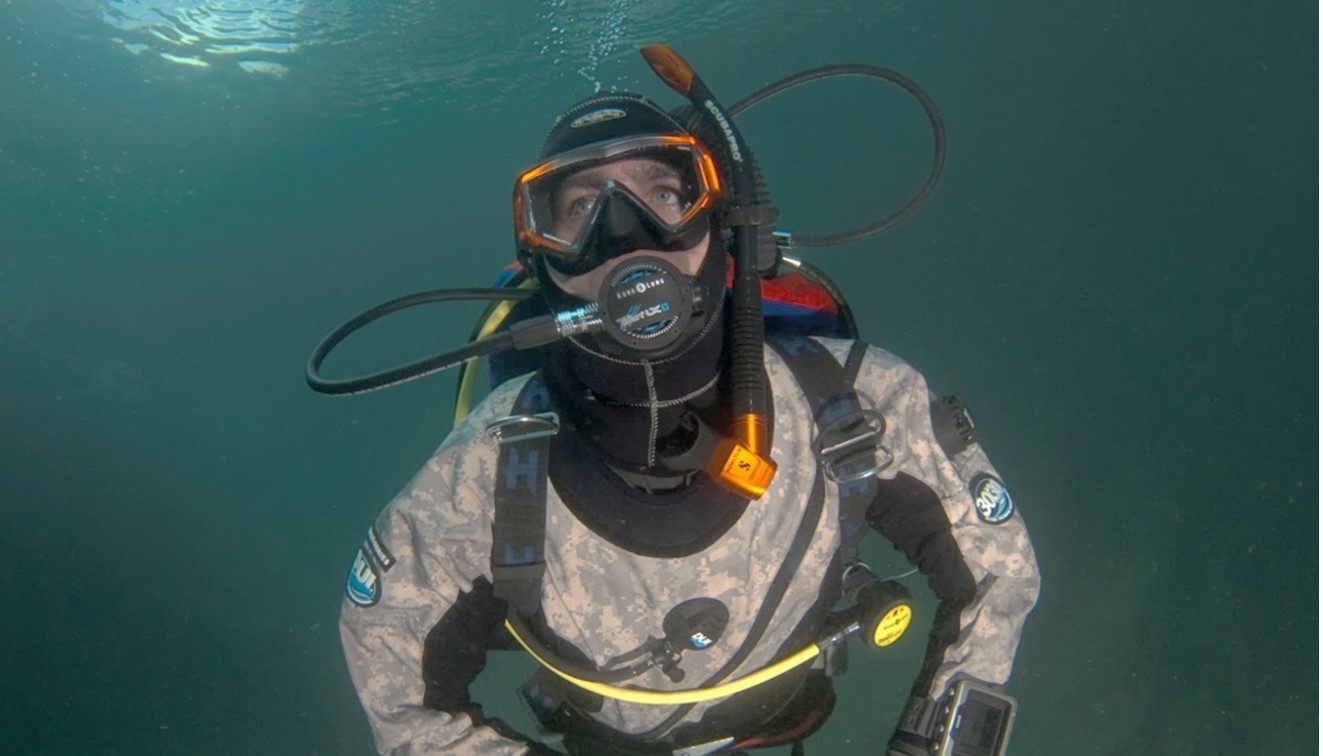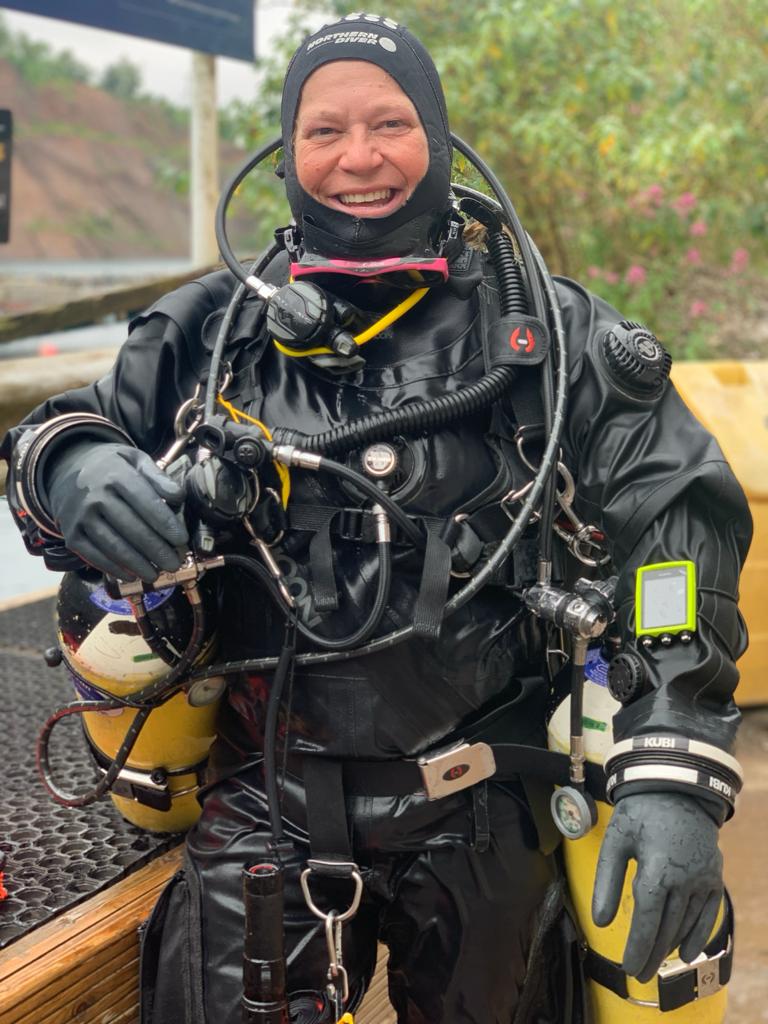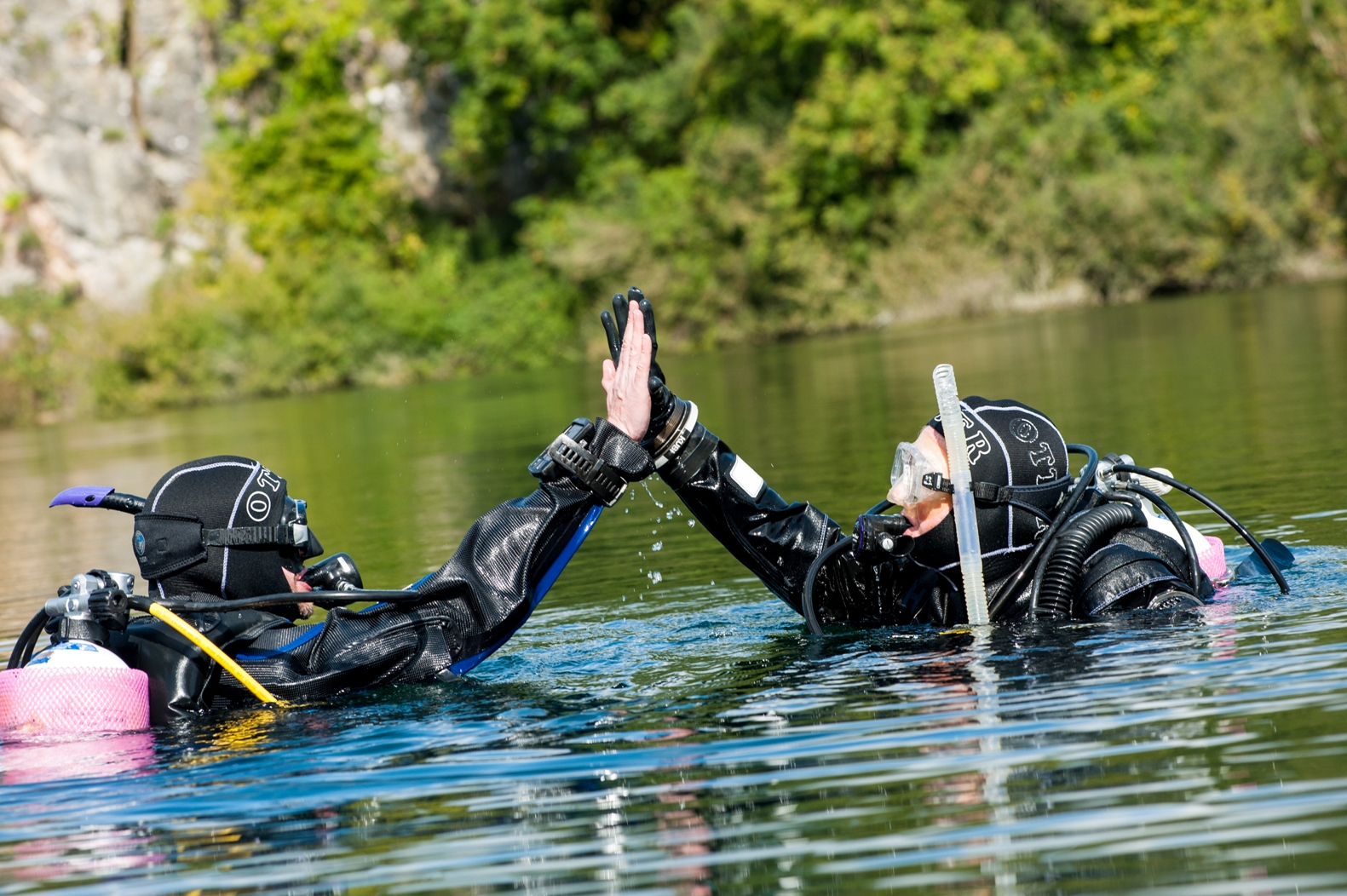PADI Dry Suit Course – Should You Do It?

What is a Scuba Diving Dry Suit?
A scuba diving drysuit is an essential piece of equipment for divers who explore cold waters. Unlike wetsuits, which allow water to come into contact with the skin, drysuits are designed to keep you completely dry by trapping a layer of air between the suit and your body. Here are some key points about drysuits:
- Function: Drysuits provide environmental protection while scuba diving, allowing you to stay warm even in frigid waters. They work by creating a watertight barrier that prevents water from entering the suit.
- Materials: Drysuits are typically made from materials like neoprene, trilaminate membranes, or Nylon Trilaminate. These materials ensure that the suit remains waterproof.
- Seals and Zippers:
- Neck Seal: Drysuits have snugly fitting seals at the neck, wrists, and sometimes ankles. The neck seal prevents water from entering through the neck area.
- Wrist Seals: The wrist seals serve a similar purpose, keeping water out.
- Zippers: Drysuits often have a chest zip or front-entry zip to facilitate easy donning and doffing.
- Insulation: Drysuits rely on the layer of air trapped inside to provide insulation. Divers can wear warm clothing underneath the drysuit, and this layer of air helps retain body heat.
- Types of Drysuits:
- Membrane Drysuits: These suits use a thin membrane material (such as trilaminate) and require additional thermal undergarments.
- Neoprene Drysuits: Made from thick neoprene, these suits provide both insulation and buoyancy.
- Hybrid Drysuits: Combining neoprene and membrane materials, hybrid drysuits offer flexibility and insulation.
- Inflation System: Drysuits have an inflation system (usually an integrated valve) that allows divers to add air without letting water in. This helps maintain buoyancy and keeps the suit snug.
- Considerations:
- Fit: Proper fit is crucial for comfort and functionality. Drysuits come in various sizes, including short and tall options.
- Quality: Invest in a high-quality drysuit from reputable manufacturers.
- Purpose: Consider the type of diving you’ll be doing (recreational, technical, or cold-water diving) when choosing a drysuit.
Remember, a well-maintained drysuit can significantly enhance your diving experience, especially in colder conditions!
Are Drysuit Divers Crazy?
Some people think that UK divers are mad, especially like today when we are diving in 5 degree water temperatures. However what they don’t always appreciate that learning to dive in a dry suit means that you can dive in pretty much all weather conditions.


The PADI Dry Suit Diver Specialty course offers several compelling reasons why divers should consider taking it…
- Dive Comfortably in Cold Waters: Dry suits allow you to explore colder water temperatures while staying warm and dry. By mastering dry suit diving, you can extend your dive season and enjoy underwater adventures even in chilly conditions.
- Access Unique Dive Sites: As a certified dry suit diver, you’ll have the opportunity to explore dive sites that wetsuit divers may not venture into. Scapa Flow, Silfra Crack, and The Sunshine Coast are just a few examples of exciting locations where dry suit diving opens up new possibilities.
- Essential Safety Skills: The course teaches essential dry suit safety skills in just one or two days. You’ll learn how to:
Get in and out of a dry suit with minimal assistance.
- Control buoyancy using your dry suit.
- Determine the right amount of weight and its placement.
- Follow dry suit safety procedures.
- Avoid and escape feet-first buoyant ascents.
- Properly maintain your dry suit (some can last 10 years or more with proper care).
Certification for Renting or Buying: To rent or buy a dry suit, you should need to show your a dry suit certification. Don’t put yourself at risk by using a dry suit without proper training!
Master Essential Skills:
- Venting the drysuit: Learn how to manage, move, and efficiently release air from the exhaust valve.
- Disconnecting the inflator: Rare but critical – knowing how to disconnect the inflator prevents underwater ballooning.
- Connecting a pressurized inflator hose: Avoid uncomfortable suit squeeze by practicing this skill.
Counts Toward Advanced Open Water Diver Certification: Your dry suit certification also contributes to your Advanced Open Water Diver rating.

Remember, with expert guidance from a PADI Instructor, you’ll navigate dry suit diving successfully and avoid common problems. So, consider the PADI Dry Suit Diver Specialty course for a more comfortable and versatile diving experience! 🌊🔍
If you’re interested in taking the course, reach out to us to get started!
